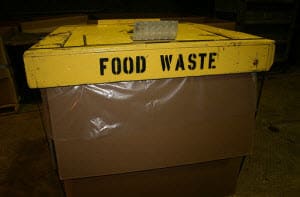With 2017 making its exit, 2018 ushers in new trends, new goals but above all, new restaurant décor ideas. Realistically speaking, most restaurants don’t change their décor annually but there are touch-ups that can be used that match with the theme. New food industry trends are constantly in the making. The restaurant business is evolving so rather than bucking the trend, embracing changes can create business opportunities and drive sales. Whether you are looking to open a restaurant or need to remodel your current venue, below are several restaurant trends for 2018 to consider.
Restaurant Trends that are Going Mainstream in 2024

Rustic Industrial Restaurant Design and Layout

Wood and metal hybrid restaurant furniture is becoming a popular choice among many venues. Owners are progressively opting for a rustic restaurant décor with industrial furniture. Wooden restaurant chairs paired with tables along with matching bar stools have been common among eateries in the recent years and are fashionable in 2018. Restaurants are looking to create a fresh and warm ambiance for their guests with commercial grade furniture made of natural textures displaying earthy tones.
The Swedish Lagom Trend

When it comes to restaurant website design ideas, less is more. The website layout should be simple and clean as it is often the first stage of the customer’s dining experience. The objective of your website should showcase an enticing array of the dishes featured. It should also allow viewers easy access to necessary information about your venue. Before designing your website, you should consider the following questions that customers may ask:
- Is this the kind of place I would dine at?
- What kind of ambiance does it have?
- What does the menu feature?
- What impression does this place make on the guests?
- Are there specials offered?
A great design on the website will answer these questions within 5 seconds upon viewing the site. In other words, your website should feature an illustrative menu with dietary options included. Prices should be listed as well. Chef features may also pique the interest of the viewers. Allow previous customers to post their reviews on your site. If they have questions for you, address them yourself instead of bearing the responsibility to a third party. Once you make your site live to the public, it’s crucial to keep it up to date. An outdated site (with too many features) can have an adverse effect on the restaurant’s brand and foot traffic ultimately resulting consequences for your business.
Quality over Quantity
While cramming guests in your establishment as much as possible can potentially maximize your revenue, it can affect their dining experience in a negative way. Quality is paramount in this instance. More restaurant owners are embracing the concept of not having too much or too little. By employing simplicity, every detail on your furniture will be noticed by patrons. If your venue is located in a unique building, showcase its features with an affective seating layout plan and top quality designer commercial furniture that highlights your décor.
Reduction in Food Waste

Chefs say that minimizing food waste helps keep food costs under control in the back of the house. Devising and executing food waste solutions can protect the environment. These days, more restaurants are keeping track of the usage of food, reducing portion sizes, and donating leftovers to charity organizations. Most customers are happy to support these socially and environmentally responsible business choices
Locally sourced meat, seafood and produce

American diners want to know where the food they eat is grown and harvested from. They are increasingly expressing their preference for fresh and local food and are willing to pay extra for it. Restaurateurs are willingly accommodating their requests. To ensure that your guests are provided with the best quality of ingredients used in the dishes they order, utilizing locally sourced produce, meat and seafood is the most logical approach. You are what you eat and consumers know this the most. Plus they are happy to help local farmers and purveyors expand their businesses so why won’t you?





























































